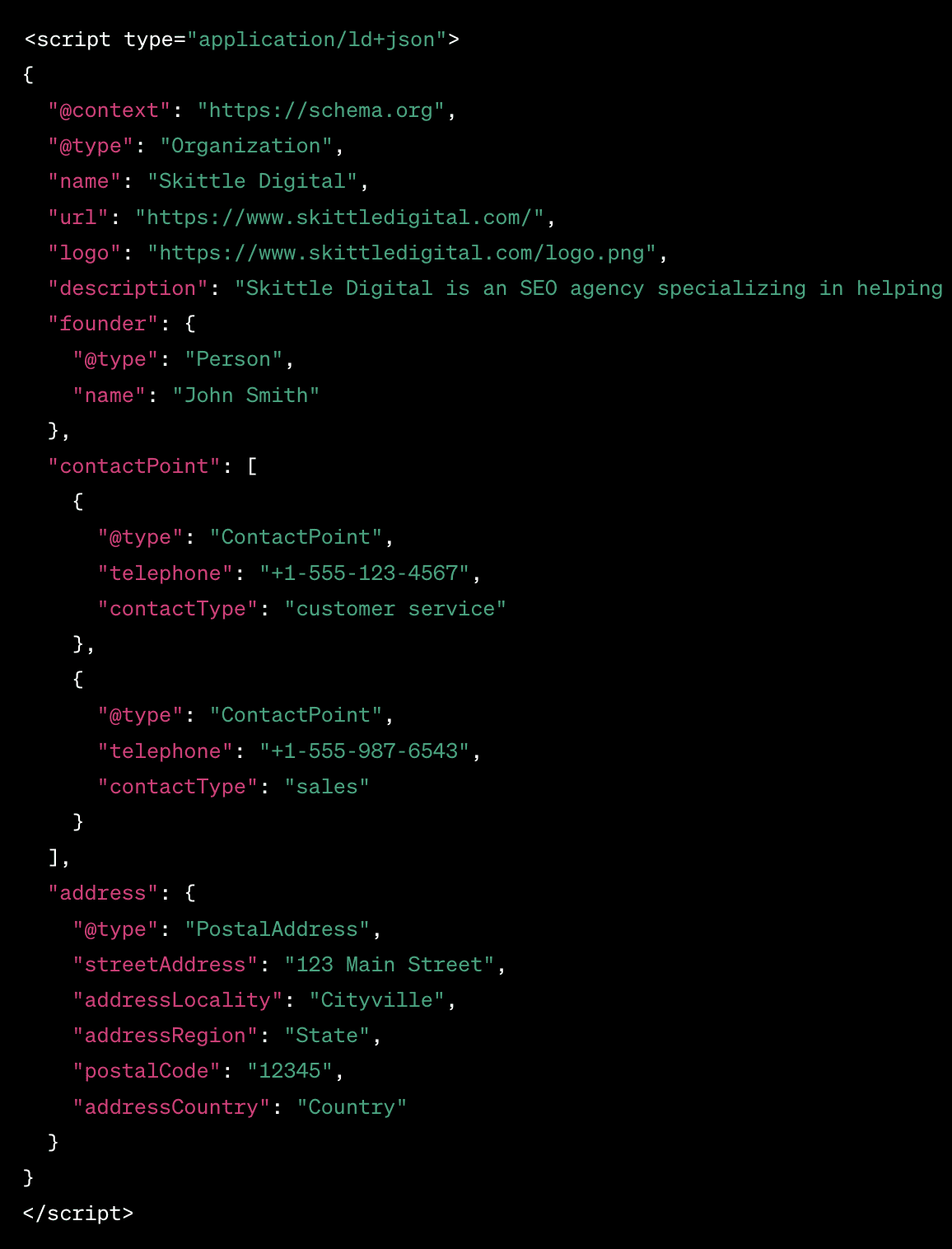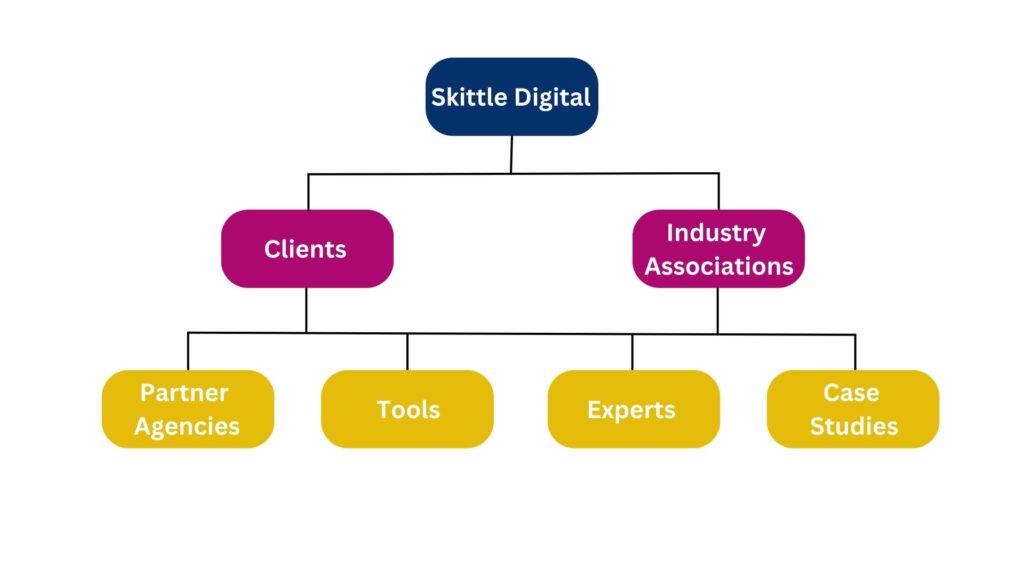Whenever we put work into ranking for a search query, we want people to pick our brand and click onto our link.
If we have optimised our metadata to give clear, accurate and informative summaries of what people can expect to read – and we follow through with genuinely helpful, high-quality content on the page – then we are helping to build out our brand reputation.
However, there is more work we can do to help Google understand what our brand is all about – and this is where brand entity SEO comes in.
We want to ensure that our brand features on the Google Knowledge Graph – the database which makes sense of the connections between, and facts about, entities.
As Search Generative Experience rolls out and Bard becomes more widely used, it will become increasingly important to have your brand optimised for entity SEO.
Google will be less likely to give visibility in the SERPs to brands which are not explicitly defined in its Knowledge Graph – and it is this information that language models such as PaLM 2 are using to roll out information via SGE and Bard to searchers.
With this in mind, here are our seven entity SEO hacks to boost your brand awareness in the SERPs.
1. Define your brand entity
Clarity and consistency is key if you want your brand to become an entity in the Google Knowledge Graph. The first step towards producing this messaging is defining your official brand name. While it may sound obvious, you’d be surprised at the number of colleagues who call your company something slightly different, especially when they write it down. For example, your brand could be known across the company as:
- Skittle Digital
- Skittle
- SkittleDigital
- skittledigital.com
- Skittle SEO
You want to ensure Google doesn’t interpret all of the modified versions as different entities, so align on one version and stick with it.
2. Use a semantic triple in your brand entity bio
Once you have defined your brand entity, you will be able to create a brand entity bio. There is a certain level of formula you need to apply here, as you are essentially compiling language in a way that is easy for Google to understand. In other words, you are marketing to the machines.
The best way to get your entity bio off to a good start is to use a semantic triple. This is a statement which uses a subject, predicate and object. The subject is the entity, the predicate is the relationship between the subject and the object and the object is the target of the attribute associated with the subject.
Here is an example:
Subject: Skittle Digital
Predicate: is an
Object: SEO agency
So, the semantic triple for the entity bio of Skittle Digital as an SEO agency would be:
Skittle Digital is an SEO agency.
3. Use organisation schema markup in JSON-LD
Once you have your entity bio mapped out on your About page, you want to ensure you are using organisation schema markup in JSON-LD to drive home the messaging about your brand to Google. For example, the following sample markup could be used for Skittle Digital:

In this example:
- The “@context” specifies the schema.org context.
- The “@type” indicates that it is an Organization.
- “name” represents the name of the organization, which is “Skittle Digital.”
- “url” provides the website URL for Skittle Digital.
- “logo” represents the URL of the organization’s logo.
- “description” gives a brief description of Skittle Digital as an SEO agency.
- “founder” specifies the founder of Skittle Digital, identified as John Smith for example purposes.
- “contactPoint” includes contact details for customer service and sales, represented as contact points.
- “address” represents the physical address of Skittle Digital, including street address, locality, region, postal code, and country.
This JSON-LD markup can be placed within the HTML of the About page on skittledigital.com to provide structured data to search engines and other applications.
4. Markup structured data for each relevant entity on your site
You will know there is more to your brand than just the entity itself. You will have other entities related to it, such as the founder, the parent organisation, the awards it has won, products it owns, events it has hosted, and so on.
Whenever you are referencing these related entities on your site, you want to mark these up with structured data. The net result is that Google will explicitly understand all the entities and their connections with your brand entity, strengthening its presence in the Knowledge Graph and increasing the chances of your brand being discoverable when searchers are looking up topical queries.

In this mind map:
- Skittle Digital is at the centre, representing the main entity.
- Clients branch out from Skittle Digital, indicating the businesses or organisations they work with.
- The Industry Associations branch shows the associations or organisations related to the digital marketing industry.
- Partner Agencies represent other agencies or firms that collaborate with Skittle Digital.
- Tools represent the various SEO tools and software that Skittle Digital utilises.
- Experts branch out to indicate connections with SEO experts and influencers.
- Case Studies show the success stories or specific projects worked on by Skittle Digital.
This mind map visualises the relationships and connections of Skittle Digital with various related entities in a structured and interconnected manner.
5. Optimise your pages to improve your rich sitelinks
There are numerous benefits to having rich sitelinks present in your brand SERP for entity SEO. Not only do you benefit from increased visibility and occupation of a large portion of the results page, you are also improving your brand authority by establishing it as a notable entity in the industry.
To optimise your pages so that you generate, or improve, your rich sitelinks, first ensure you have a clear site structure with logical navigation menus, hierarchical page structures and a solid internal linking strategy.
From there, optimise your homepage with concise and descriptive meta tags. Ensure your page titles and meta descriptions are descriptive enough that they encourage users to click on your sitelinks, and they inform search engines of your brand purpose and offering.
Ensure structured data is implemented across your site to highlight important elements such as contact details, product listings or articles. By implementing these strategies and monitoring your site’s search results, you’ll be on the right track towards improving your rich sitelinks.
6. Replicate corroborating facts to trigger a knowledge panel
Once you have optimised your site for brand entity SEO, it’s time to branch out and replicate the core facts on authoritative sources to ensure that Google understands exactly what you’re all about.
There are a number of sites which Google identifies as authoritative sources, such as Instagram, IMDb, TechCrunch, Wikipedia and so on. By ensuring your core facts are on these sites, repeating the same message about your brand identity, you will be improving your chances of triggering a knowledge panel.
Ensure that your About page on your site is an authoritative reference point which search engines can use when comparing facts which have been published elsewhere on the web.
Once you have a knowledge panel appearing for your brand in the SERP, you can be proactive in claiming the panel and ensuring it remains accurate and up to date.
7. Feed the knowledge algorithms with digital PR campaigns
Digital PR campaigns are arguably the best way to gain brand awareness, both in the traditional sense and in the context of entity SEO. Once you have done all the work consolidating your clear brand messaging across your site and third-party platforms, it’s time to consider investing in campaigns to get the word out about your brand.
By gaining backlinks with contextual brand information on Tier One websites which Google considers to be authoritative, you will be feeding the knowledge algorithms with additional details about your brand entity and adding little details over time to build a bigger picture of who you are in the Knowledge Graph.
8. Request changes and fact corrections on previous Tier One articles
In the first point, you made sure that your brand entity was defined clearly and agreed upon internally. If your brand has put in work in the past towards gaining backlinks in Tier One publications, now is the time to go back and revisit those previously posted articles.
Don’t neglect the important work of fact-correcting any information which needs to be aligned, requesting changes where necessary to ensure all details on authoritative third-party sites align with your brand entity building. Just ensure you prioritise the sites which Google considers to be important, as if a site is authoritative, but not relevant to your industry, it’s not worth considering.
9. Want to boost your brand awareness?
If your brand isn’t appearing in the Knowledge Graph, and you want to give your entity presence a boost, we can help you with SEO strategy to achieve this goal.
Alternatively, book a Free Acquisitions Workshop to find out where your site could benefit from some TLC.
We’ll give you actionable insights that you can take away and implement, free of charge. Get in touch with us today to find out more.












